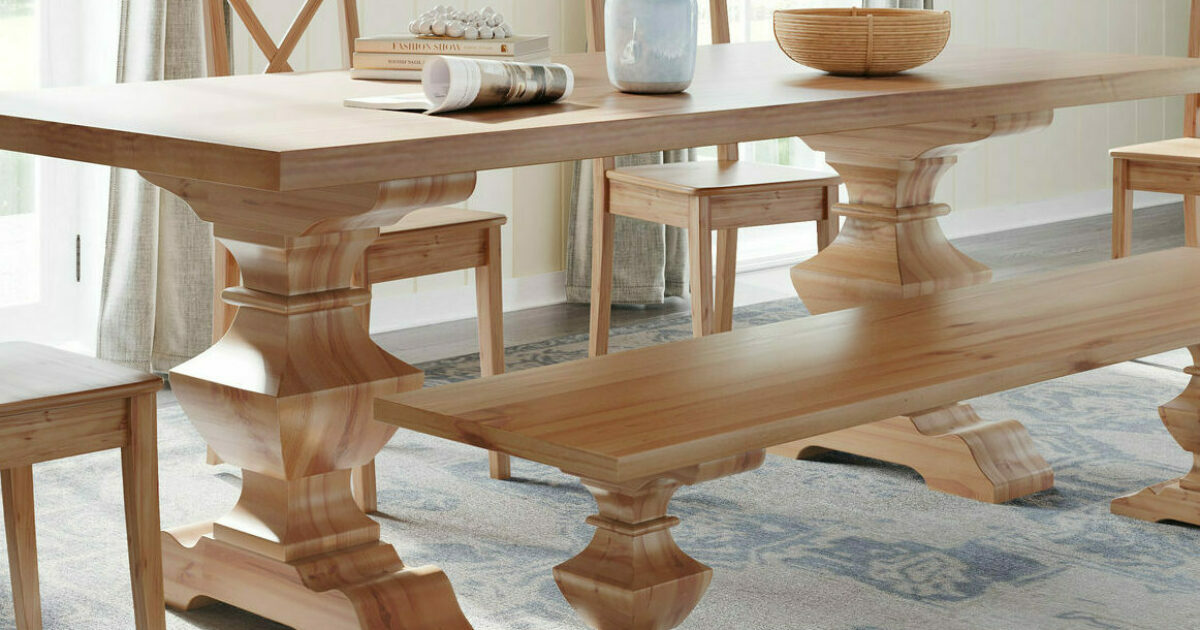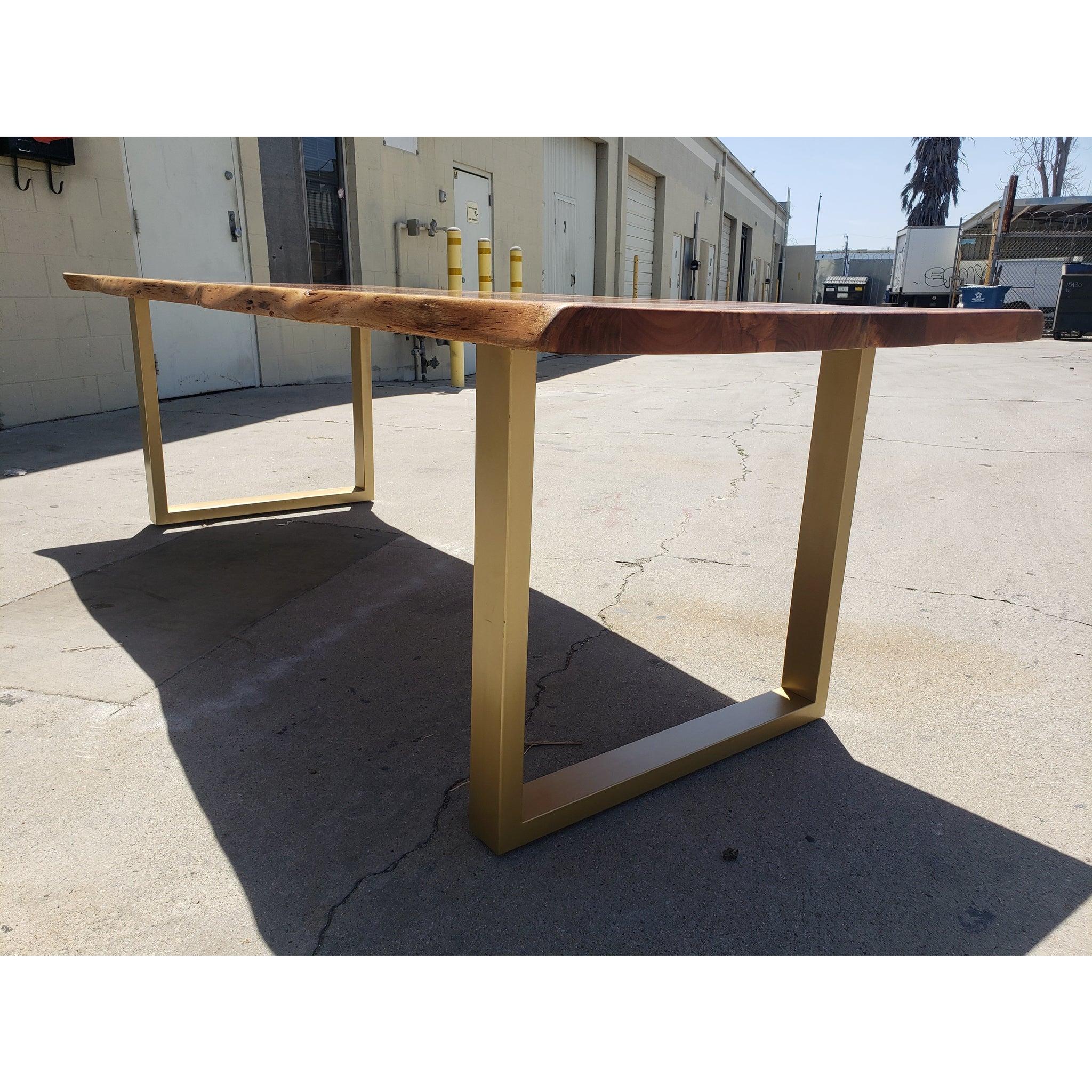Include a Rustic Touch to Your Table with Classic Dining Table Legs Wood
Include a Rustic Touch to Your Table with Classic Dining Table Legs Wood
Blog Article
Necessary Considerations for Choosing the Right Table Legs Wood
Picking the ideal timber for dining table legs includes a nuanced understanding of numerous variables that affect both performance and visual charm. The choice of timber kind, ranging from robust woods to a lot more delicate softwoods, plays a crucial duty in making sure longevity and security. Furthermore, factors to consider regarding spending plan, maintenance, and design must be thoroughly examined. Each of these elements can substantially influence the total experience of your eating room. Recognizing exactly how these aspects interrelate is crucial for making an educated choice that meets your details needs and preferences - Dining Table Legs Wood. What considerations will you prioritize in your option process?
Significance of Wood Type

Hardwoods, such as maple, walnut, and oak, are frequently preferred for their toughness and resistance to wear. These types of wood give a robust structure that can endure daily use, making them excellent for eating tables that experience constant celebrations. In contrast, softer woods like pine might be much more susceptible to damages and scrapes, which might not be optimal for high-traffic areas.
Additionally, the selection of timber can also impact the simplicity of upkeep. Some woods call for normal oiling or securing to preserve their appearance, while others might be more forgiving. Eventually, selecting the proper wood type involves stabilizing visual considerations with sensible demands, making certain that the table legs not just look enticing but also stand the examination of time.
Analyzing Stability and Strength
When evaluating table legs, one should think about the stability and toughness they provide to the general framework. The legs are critical in sustaining the tabletop and making certain the eating experience is safe and satisfying. A secure table is crucial for avoiding wobbling or tipping, which can cause spills or accidents throughout meals.
The selection of timber kind substantially influences stamina. Woods such as maple, oak, and walnut are typically much more durable and robust than softwoods like pine or fir. Additionally, the thickness and layout of the legs play an important duty; thicker legs or those with a tapered style can use better support and stability.

Aesthetic Considerations
While performance is vital, the visual allure of table legs can not be neglected, as they considerably affect the total style and atmosphere of the dining area. The choice of wood, coating, and layout can detract or enhance from the table's aesthetic influence.

Coatings additionally play an important duty in appearances. A natural coating can highlight the timber's innate charm, while painted or discolored legs can introduce shade and personality into the room. Furthermore, the proportion and scale of the legs relative to the table top and surrounding furniture needs to be taken into consideration to ensure aesthetic balance and cohesion.
Eventually, the table legs should not just offer a useful function yet additionally add to a cohesive and inviting environment, making them a vital consideration in the overall layout of the dining area.
Maintenance Needs
To make certain durability and preserve get redirected here the beauty of wooden table legs, routine maintenance is necessary (Dining Table Legs Wood). Wood is a natural material that can be susceptible to damage from wetness, heat, and use. Developing a routine care plan will substantially enhance the longevity of your dining table legs.
Begin with regular dusting utilizing a soft, lint-free towel to get rid of dust and debris that can scratch the surface area. For more thorough cleansing, make use of a light soap option and damp fabric, avoiding excess dampness that can leak into the timber. It is suggested to use a top notch wood polish or conditioner every couple of months to nurture the wood and preserve its gloss.
Furthermore, take into consideration the environment where the table is positioned. Avoid straight sunshine, as it can trigger fading, and make use of placemats or rollercoasters to safeguard the surface area from warm and wetness. Resolve any scrapes or dents immediately with proper wood filler or touch-up pens to stop further damage. By sticking to these maintenance demands, you will certainly not only protect the visual appeal of your wood dining table legs but Recommended Reading also prolong their functional life-span.
Budget Plan and Price Aspects
Budget plan and expense variables frequently play an essential role in the decision-making procedure for picking wooden dining table legs. When assessing alternatives, it is necessary to develop a clear budget that lines up with your overall furnishings investment. The price of wooden eating table legs can differ substantially based on the type of wood, workmanship, and style intricacy.
Hardwoods such as oak, cherry, and walnut typically regulate higher rates because of their durability and visual charm. On the other hand, softer woods like want might be extra economical however may not use the exact same long life. In addition, customized or artisan-crafted legs can sustain extra costs, mirroring the ability and time purchased their creation.
It is likewise crucial to consider the prospective long-term worth of your financial investment. While choosing for lower-cost products may appear economically prudent originally, they might need even more frequent replacement or repair work, ultimately raising overall expenditure.
As a result, balancing quality and cost is crucial. Prioritize materials that fulfill your aesthetic preferences while guaranteeing they fit conveniently within your budget plan, allowing you to create an eating location that is both functional and visually appealing.
Verdict
In verdict, choosing the appropriate wood for eating table legs demands mindful factor to consider of various variables, including timber type, security, aesthetics, upkeep, and spending plan. Inevitably, an educated decision will improve the long life and visual appeal of the eating table, guaranteeing fulfillment and functionality for years to come.
Choosing the best a fantastic read type of timber for dining table legs is crucial for both aesthetic appeal and architectural integrity. Inevitably, selecting the suitable timber kind involves stabilizing aesthetic considerations with functional needs, making sure that the eating table legs not only look attractive yet likewise stand the test of time.
It is advisable to use a premium wood polish or conditioner every couple of months to nurture the timber and keep its appeal.
The cost of wood dining table legs can differ dramatically based on the type of timber, craftsmanship, and layout complexity.
In conclusion, selecting the appropriate timber for dining table legs demands mindful consideration of numerous factors, consisting of timber kind, stability, visual appeals, upkeep, and spending plan.
Report this page